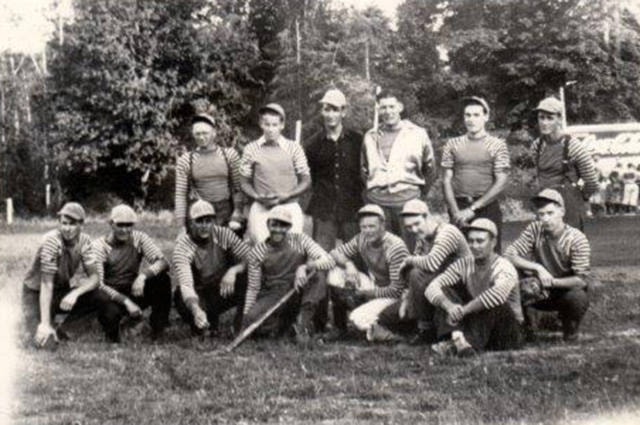Elida Peers | Contributed
If there’s one thing Sooke has always been known for is its sports.
We didn’t have the wonderful facilities and fields of today, but on the other hand, the reason the Sooke Community Hall, built in 1937, was constructed to its impressive size was to accommodate league basketball games.
The softball team pictured here, made up of Sooke and Otter Point fellows in 1946, had a lot of fun and a lot of followers when they played at the ball park. At rear, left, is Walter (Red) Jessiman, who lived in Otter Point and later ran a repair and plumbing business in Sooke. Next is Nelson Cook, another Otter Point fellow who grew up on Kemp Lake Road. Dick Rose, in the dark shirt, lived in Saseenos.
Standing next is the famous Const. Al Quinn, Sooke’s first resident provincial police officer, who spent much of his time encouraging and coaching young fellows in sports. It was said that he kept them too busy to get into trouble. At that time there was no police station and he and his wife rented on Kaltasin Road. Next is Bob Lajeunesse, who hailed from both Otter Point and Sooke and later became a fixture with Western Forest Products in Jordan River. Back in high school he was considered pretty hot because he had a car. Last in line was Wally Butler, of the Butler Brothers logging family; the generation of the Butler firm that followed is not in logging but now in concrete.
Kneeling, front, are Ken Dodds and Reg Piercy, both of them in the forest industry. Next is Rolf (Mick) Michelsen, youngest of the five sons of Mandus (Pop) Michelsen and his wife Sarah Poirier – the Michelsen boys were all good at sports. Sammy Fedosenko, who was to become so well-known because of his service to the Sooke Legion, is next. Don Roberts follows; many will remember that he and partner Dick Davidge ran a machine shop in downtown Sooke.
Third from right is Frank Jessiman, who married Velma Cook, also of Otter Point, we understand Velma is celebrating her 90th birthday this year. Babe Poirier of Kemp Lake Road is next – you can’t go back much further in Sooke pioneer history than the Poiriers. Ecole Poirier is named for his voyageur grandfather, Joseph Poirier, Sr. Last in line is Doug Morris, who became a faller like his dad. The Art Morris Park, where the young fellows played softball, was named for Doug’s dad whose life had been cut short by a “widowmaker.”
Does anyone still have one of the team’s red, white and blue striped wool jerseys?
•••
Elida Peers is the historian of the Sooke Region Museum.
editor@sookenewsmirror.com
Like us on Facebook and follow us on Twitter
